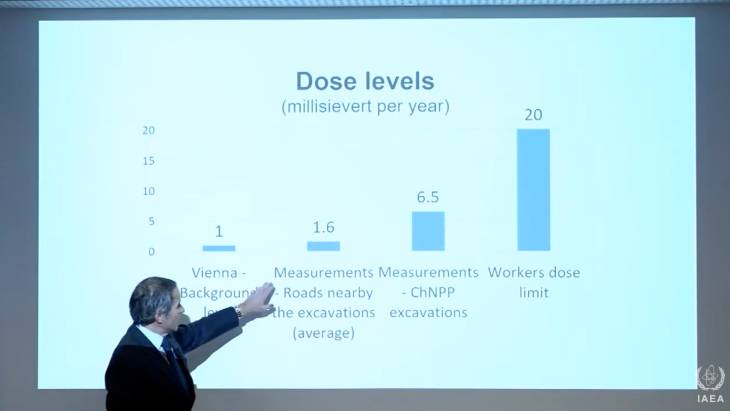On Thursday Energoatom had said Zaporozhe continued to operate but "due to the damage to the 330 kV high-voltage line in the southern region of Ukraine, ZNPP was transferred to a capacity level to ensure sustainable operation of the power system, at which only its own needs are provided."
In an update on Friday, the firm said: "After the repair of the 330 kV line damaged during the shelling in the southern region, the capacity of ZNPP power units was restored to the previous level. Now they are working at a level that, together with other nuclear power plants, allows Ukraine's energy system to meet the country's needs."
Zaporozhe, which has six units, continues to be operated by its Ukrainian staff, but under the control of Russian military forces.
IAEA director general Rafael Mariano Grossi told a media conference on Thursday, after returning to the agency's Vienna headquarters following a mission to Ukraine, that he was hoping to meet "Russian counterparts" within days, and said "Zaporozhe is at the top of my list of concerns."
He said that because it was still under Russian control the Ukrainian nuclear regulator was "not in control of the situation there and there are a number of activities that need to take place" in terms of both inspections and safety and security, as well as a need to check on damage caused during shelling at the site in early March.
Grossi, who discussed the situation with Ukraine's president during a meeting on Tuesday, said that there were "profound political implications" of getting access for inspections because it was a Ukrainian nuclear power plant, but under the control of Russian military forces.
He also said that the IAEA was aware of reports of missiles flying over nuclear power plants in Ukraine and was checking to be "100% sure", but if confirmed it would be "extremely serious … I have been saying from the first day of this crisis that the physical integrity of nuclear facilities is an absolute must".
The IAEA director general said that the mission to Chernobyl had already proved a success in terms of getting its direct remote monitoring reports reinstated. He also outlined the results of tests of radiation levels (see picture above) which showed that there were elevated radiation levels in the areas of the 'Red Forest' in the Chernobyl exlcusion zone where Russian forces had dug fortifications during their five weeks in control of the area.
However he said that the levels, at the places where they had tested, were still three times below the recommended exposure levels for workers. He said "this is not a place to have a picnic or excavate ... but the situation is not one that could be judged as posing great danger to the environment or to people at the moment that we were taking these measurements".





_91467.jpg)
_47120.jpg)
_16439.jpg)






